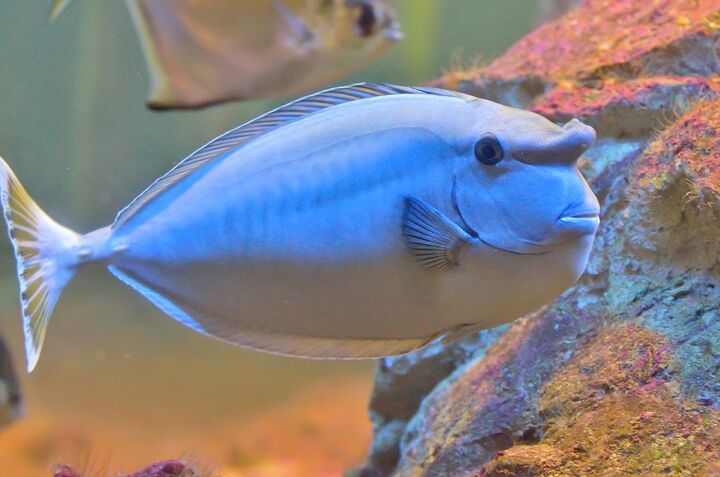
About Unicornfish
Aquarium Size
Very Large
Difficulty Of Care
Weekly
Group
Saltwater
Size
Large, Extra-Large
Suitable Tank Mates
Non-Aggressive Species of Similar Size
Swimming Region
Mid-Range
Temperament
Semi-Aggressive
Fish Water Condition
Tropical Temperature with Moderate Hardness and Slightly Alkaline pH

Unicornfish General Description
Species belonging to the genus Naso are typically referred to as unicornfish because they have a long pointed protuberance in the middle of their heads. Unicornfish belong to the same family as surgeonfish, Acanthuridae, and there are about 20 different species that have been recognized. Unicornfish have a tendency to become aggressive and territorial with their own kind but they are generally peaceful and non-combative with other non-aggressive saltwater species of similar size.
Species belonging to the genus Naso are typically referred to as unicornfish because they have a long pointed protuberance in the middle of their heads.
Origins
Unicornfishes can be found in tropical locations around the globe, particularly in the Indo-Pacific region ranging from Hawaii to Africa.
Color
While there are variations among different species, many are very drab in color. There are three species, however, that are very brightly colored – Elegant Unicornfishes, Bignose Unicornfishes, and Orange Spine Unicornfishes.
Maintenance and Care

The Unicornfish is by no means small – most species grow anywhere from 9 to 39 inches in length which means that they need very large aquariums. Not only are Unicornfish very large, but they are very active as well so they require a great deal of swimming space – your tank should not be filled to the brim with live rock or other decorations. If you do decorate the tank, keep large items placed toward the edges of the tank, leaving plenty of swimming space in the middle. In terms of water conditions, these fish prefer tropical temperatures in the 75°F to 82°F range with a slightly alkaline pH range between 8.1 and 8.4 is ideal with moderate hardness between 8 and 12 dKH.
Unicornfishes can be found in tropical locations around the globe.
Feeding
Different species of Unicornfish exhibit different dietary preferences. While most species feed primarily on algae, some Unicornfish will also accept fresh and frozen foods like brine shrimp, mysis shrimp, tubifex worms, and more. You should also provide algae flakes and wafers for your Unicornfish.
Also read: Setting a Schedule for Routine Tank Maintenance
Breeding Info
Both male and female Unicornfish develop a horn, but it is usually more well-developed in the male. There are few instances of Unicornfish successfully reproducing in home aquariums or in captivity in general. These fish are thought to be pelagic spawners, releasing their eggs into the water where they float freely with the current until hatching. Unicornfish eggs have a long larval phase.
Aquarium Varieties
There are about 20 different species of Unicornfishes that have been recognized and some of the most common include:
Bignose Unicornfishes (Naso vlamingii)Orange Spine Unicornfishes (Naso lituratus)White-Margin Unicornfishes (Naso annulatus)Blue Spine Unicornfishes (Naso unicornis)Palefin Unicornfishes (Naso brevirostris)Elegant Unicornfishes (Naso elegans)
Photo credit: mady70/Bigstock; Rich Carey/Bigstock
